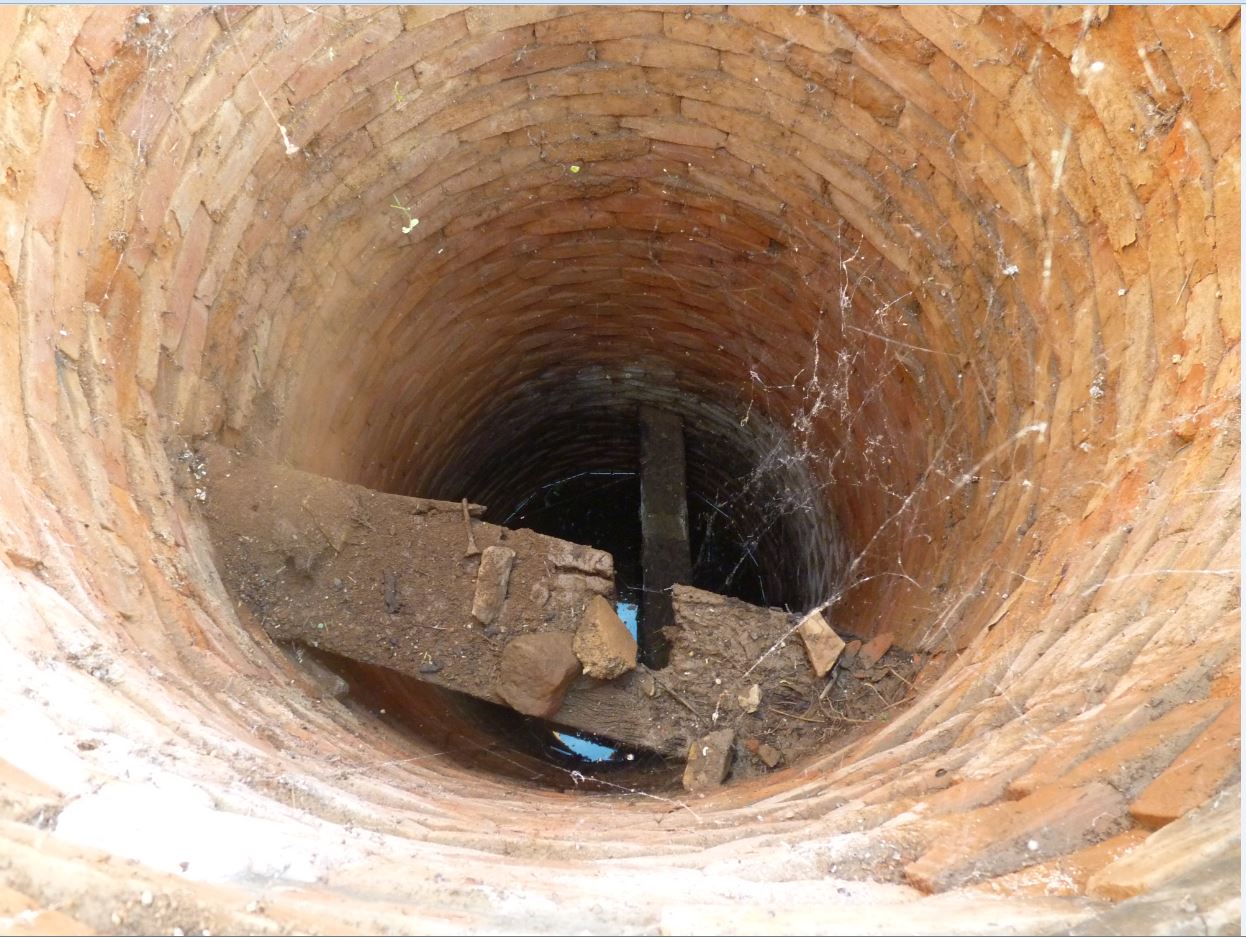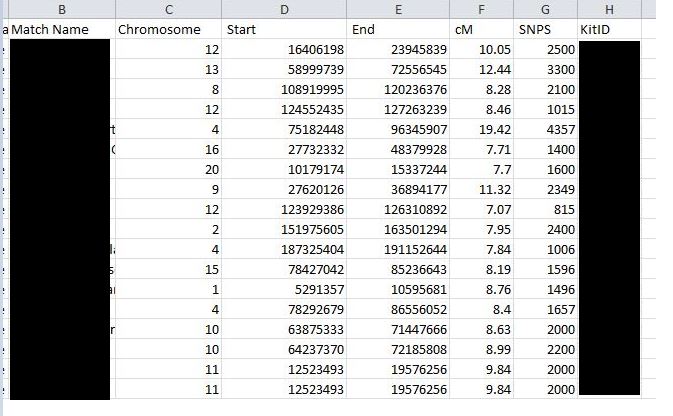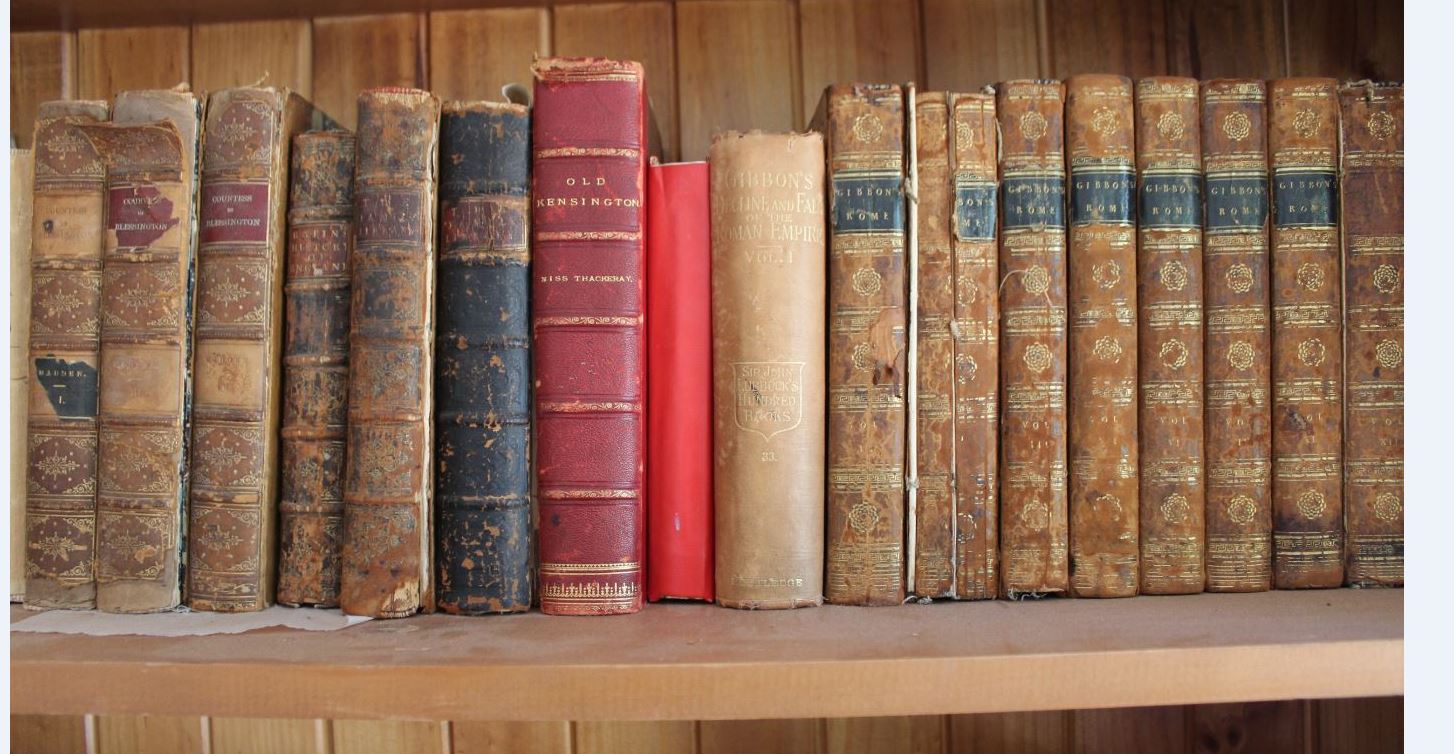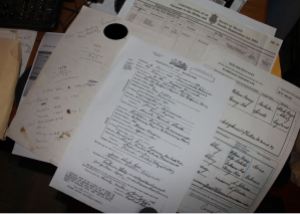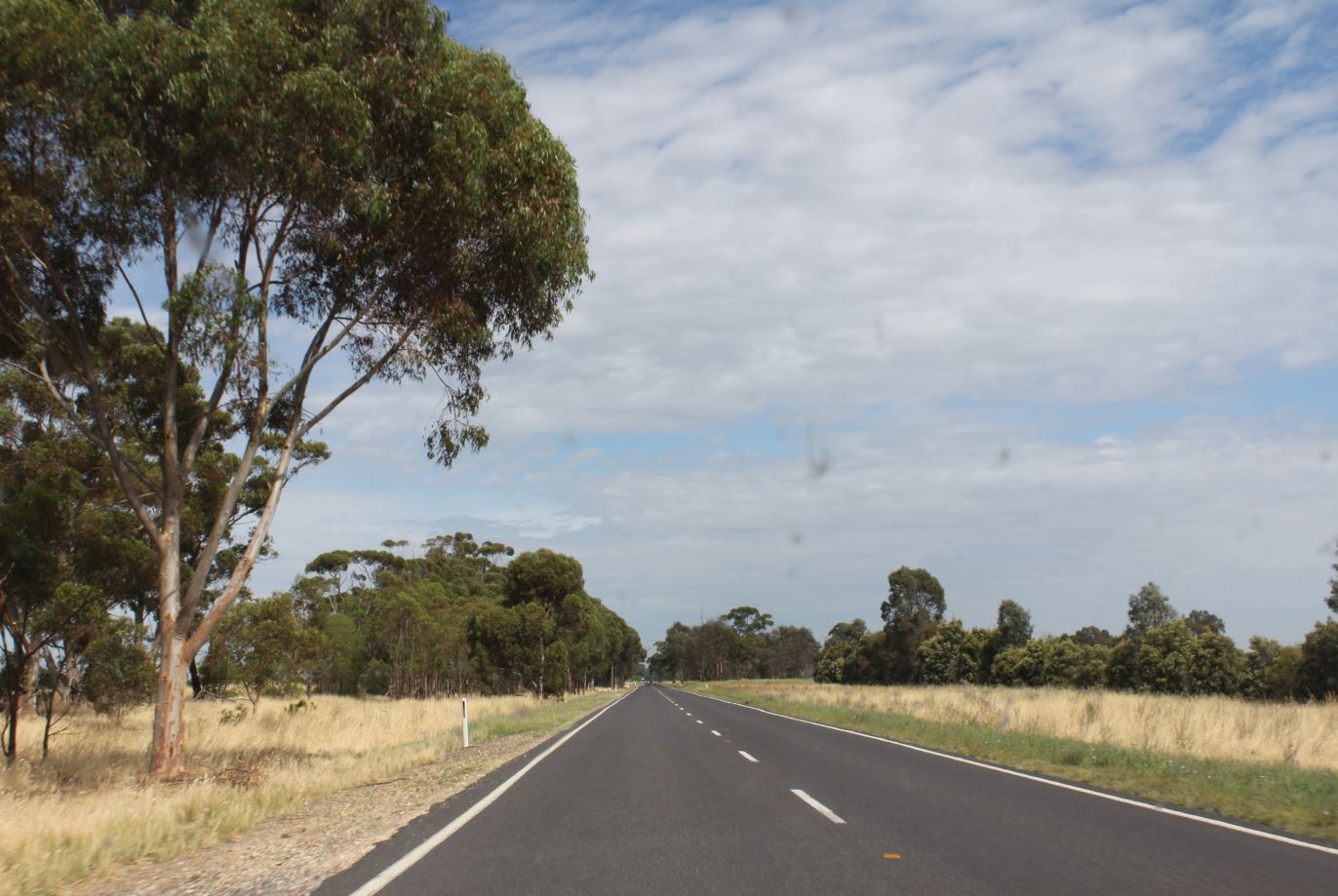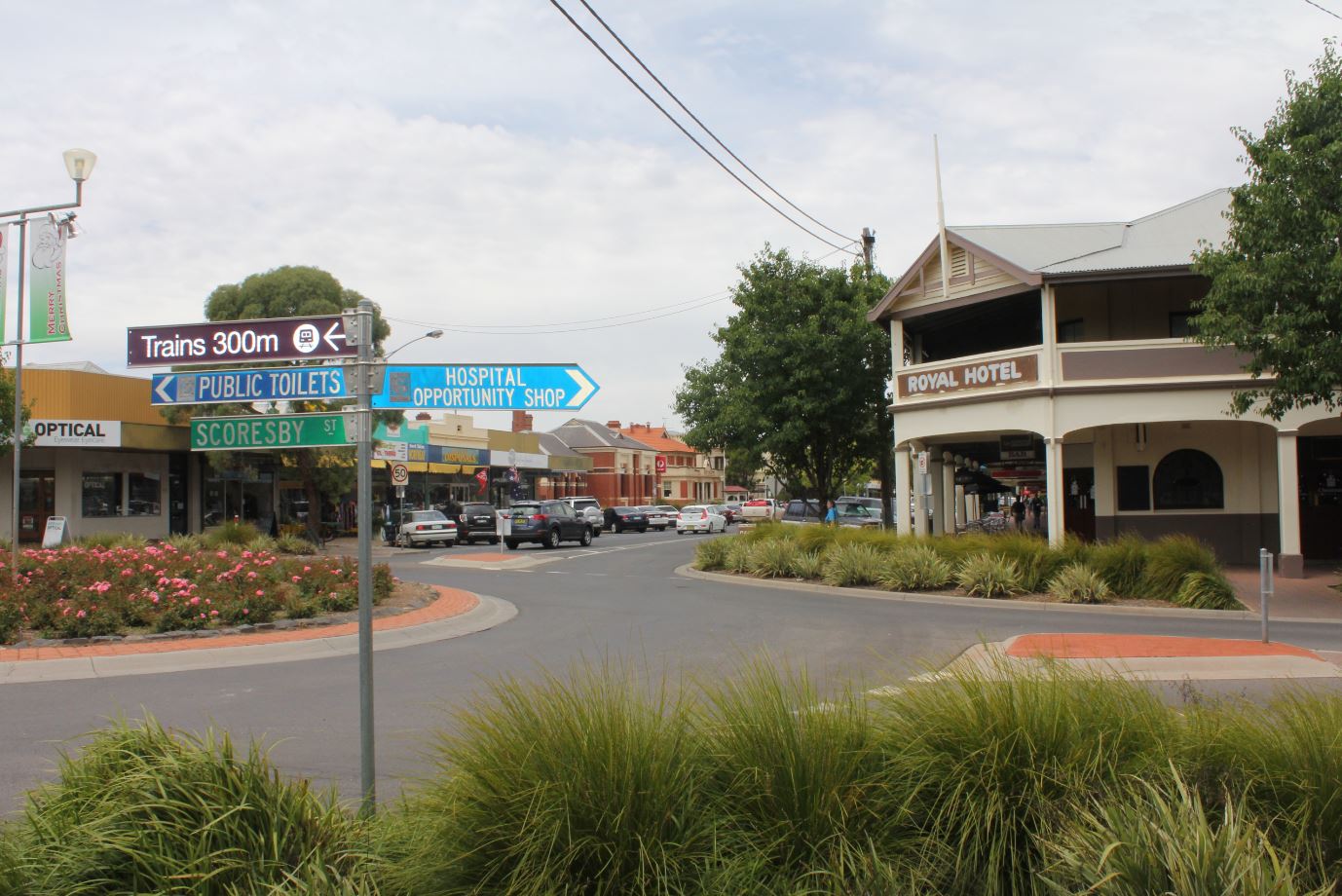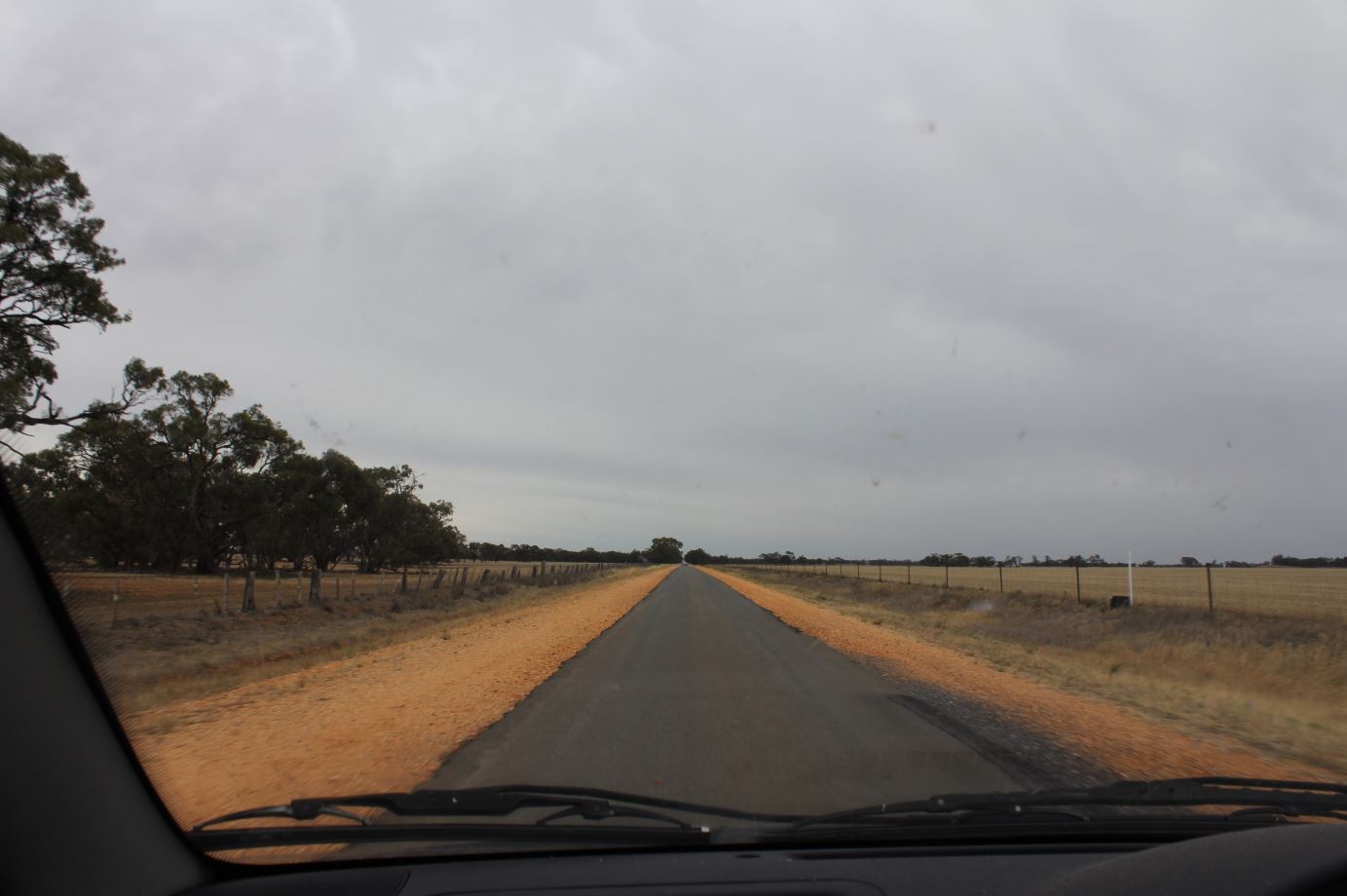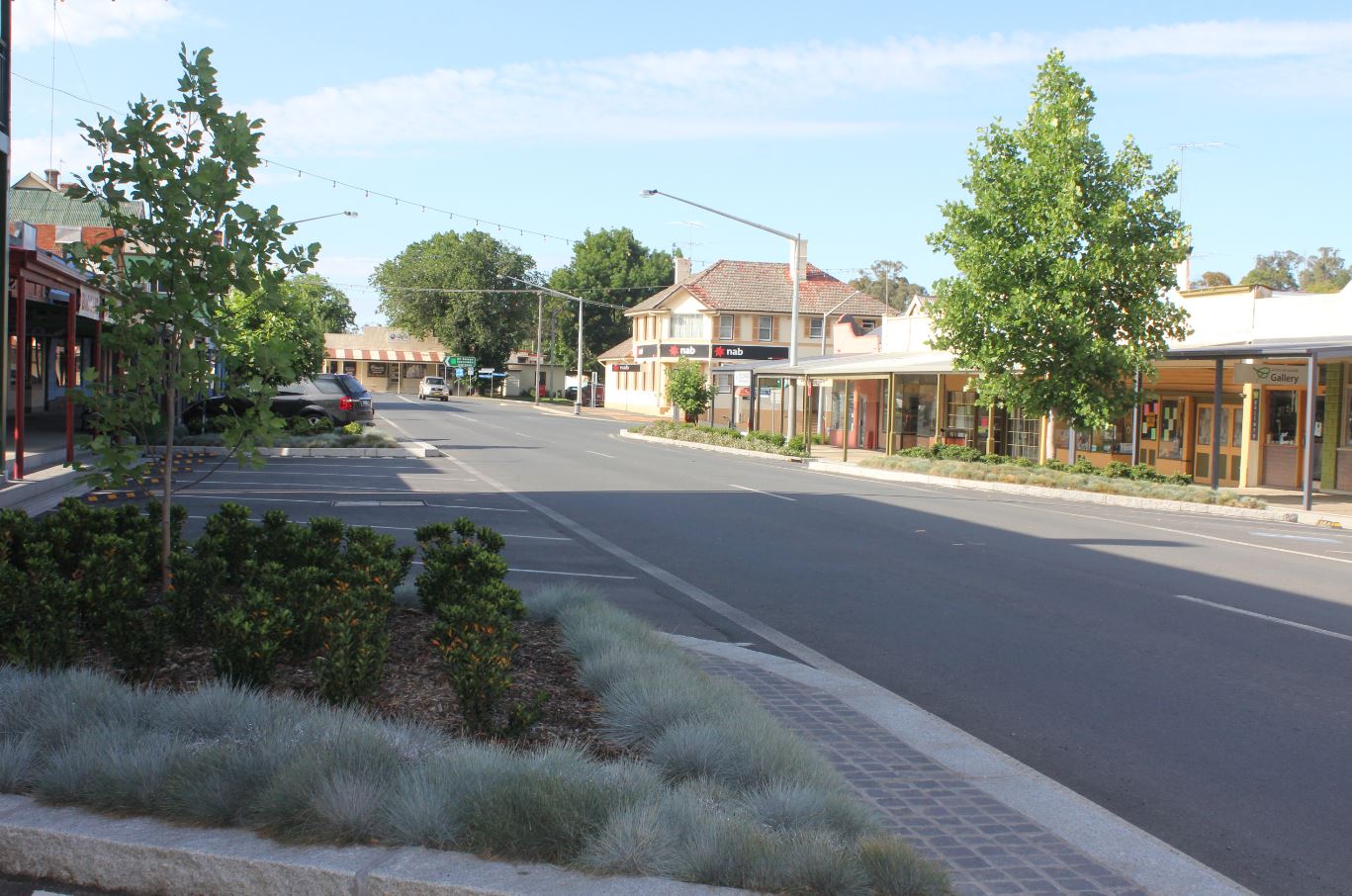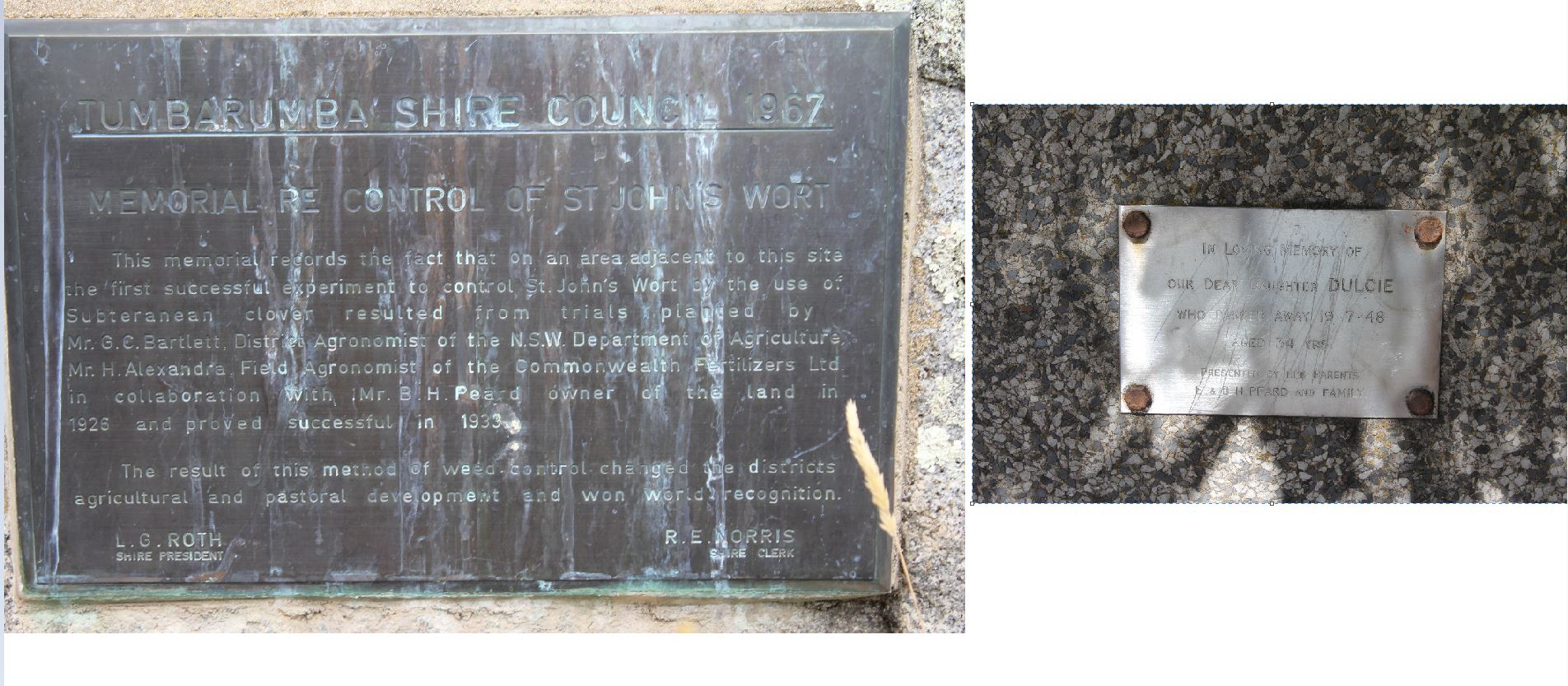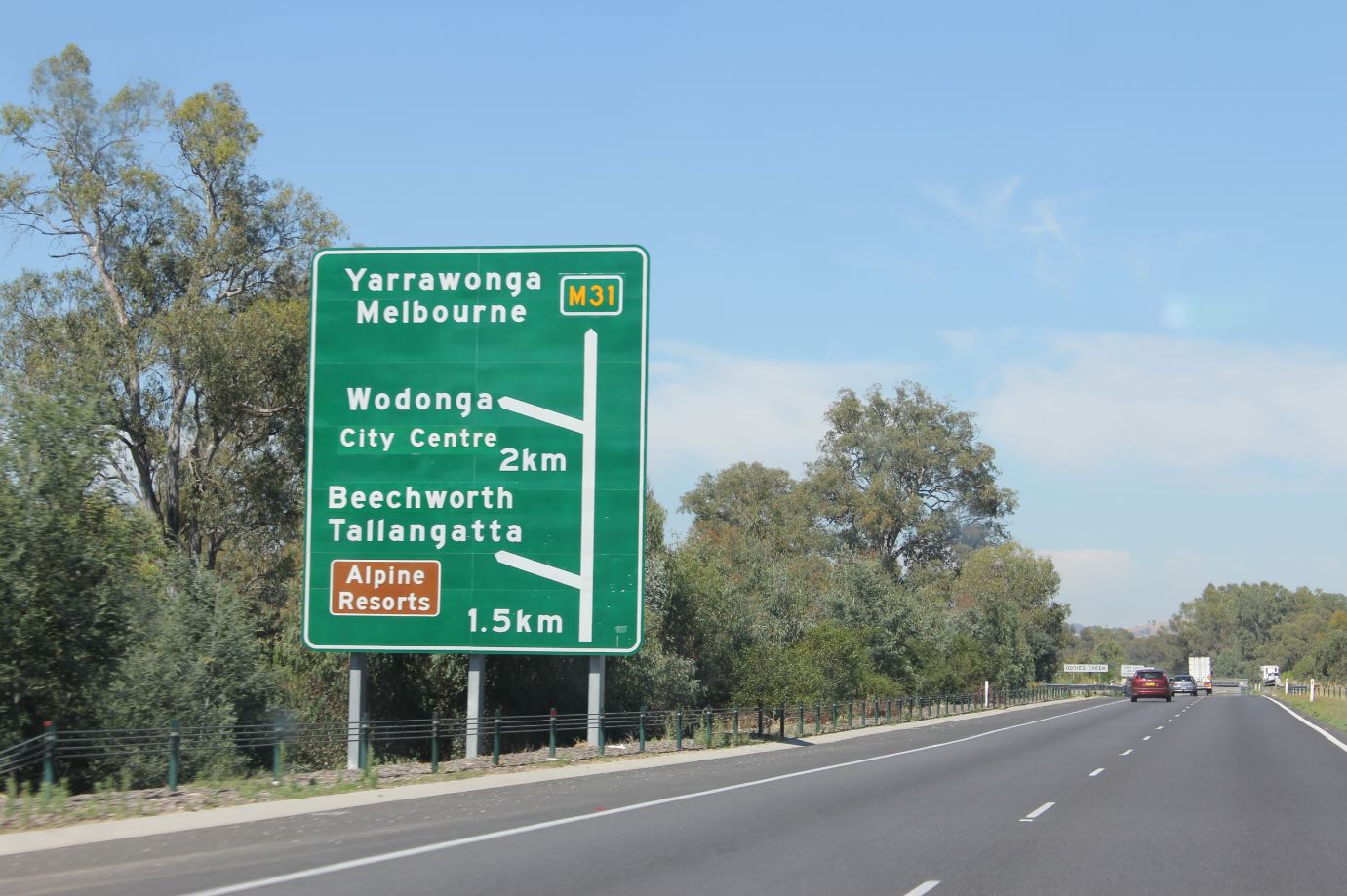
Ruins of the Anglican church at Moorwatha (click to enlarge)
Once upon a time there was a small but thriving little village called Moorwatha, situated in New South Wales close to the Victorian border. The village no longer exists. I’d never heard of it until two weeks ago, when I found a newspaper reference to a Mrs Peard who was schoolteacher there in the 1880s.
My Peard family was in this decade at Albury. Moorwatha being about 30km (20 miles) from Albury, I felt there was a chance this was a family connection. Initially I hoped it would be my own great great grandmother Mrs Mary Ann Peard, but it turns out to be a Mrs Elizabeth Peard. Nonetheless – a clue to be filed away for further reference.
I have so far identified three family groups surnamed Peard who emigrated to Australia, and all of them come from Cork in Ireland. If we could just find the records, I’m sure they will all turn out to be distant members of the same extended family.
For the sake of Peard researchers here they are, in brief:
John Peard born 1840 in Cork, Ireland emigrated alone in 1856 listed as ‘gentleman’, private passage to Sydney NSW. He’s my ancestor and married Mary Ann Burleton of Bowna. They had many children. In this family group is another emigrant, Richard Peard and his wife Bridget Collins. Richard was my John’s uncle and a soldier, he came out with his regiment and retired here. Richard was probably the first of the Peards to arrive in Australia.
John Peard birth date unknown arrived on ship Aliquis in 1856 into Port Adelaide, South Australia. He also came from Cork, Ireland. Passage details unconfirmed. He had a fling with two girls in a remote mining town in South Australia who each gave him a child in the same year, then headed for Victoria with one of the girls and their daughter Jane. Jane married William Williams in 1874 in Victoria. They stay on the radar because one of my John and Mary Ann’s daughters also married a William Williams, of a good age to be the son of this couple. Nothing confirmed. John and his chosen girl may have had more children that I have not found.
Thomas Peard and Amelia Haylock came from Cork, Ireland in the early 1850’s and settled in Wangaratta, Victoria, a mere 73km (45 miles) from Albury, all children have the same family names and they seem to have had a similar level of education and aptitude for farming. These guys have been traced back to 1800 in Fermoy, Cork which is exactly where my guys were in 1800, but records are thin on the ground.
Mrs Elizabeth Peard of Moorwatha is surely connected to one of these three family groups.
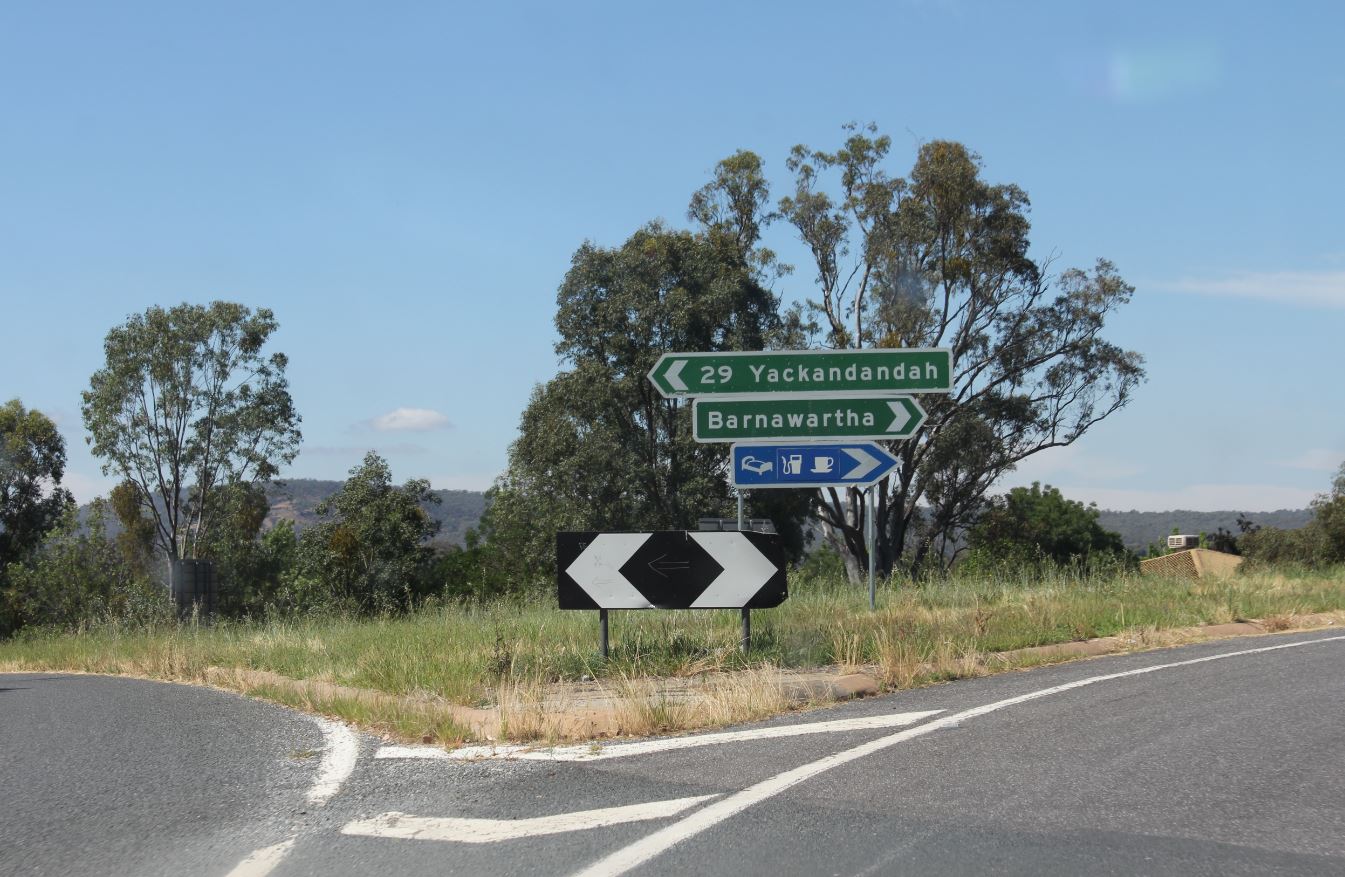
Looking for Moorwatha (Click to enlarge)
Moorwatha was on no map that I could find, and driving down the Hume Freeway was not likely to give us a signpost. Luckily, I knew that it was near Howlong as the newspaper article had mentioned this. Further, when visiting one of my aunts a few days earlier I had passed through the sleepy little town of Barnawartha, and distinctly remembered a signpost to Howlong. The way was clear.
This was not a major road. Sealed and well painted, but without much traffic and a very pleasant drive. We crossed the border again from Victoria into New South Wales and drove into Howlong. I knew Moorwatha would not be signposted and the thing to do was seek directions from a local. Luckily, there was a history room on the main street manned by a most enthusiastic and knowledgeable lady. She didn’t know how to get to Moorwatha but she had heard of it! What’s more, she could tell me that it was a parish north of Howlong and had a cemetery and the ruin of the old church. The best kind of news!
It took half an hour on a very slow council computer, but the lady found us some directions. Head out of town to the north, she told us, then turn onto the Burrumbuttock Road. Several kilometres along this road we should spot the cemetery.
It sounded quite simple. What could go wrong? We set off full of confidence.

Brocklesby Rd (Click to enlarge)
Actually, the directions were pretty good. The only thing was an extra stretch of road. We wanted Brocklesby Road which was signposted to Walbundrie and there was no mention of Burrumbuttock at all. So we drove halfway to Albury and then realised we should have seen the turn by now. We turned back and tried the road to Walbundrie, which was still a good road. Only a few kilometres along here we found the road to Burrumbuttock, nicely signposted.

Sign to Burrumbuttock (Click to enlarge)
Each turn we made took us onto a narrower, more minor road. This makes for interesting scenery, if like me your favourite scenery is old houses and properties still laid out as they must have been a hundred years ago. I do love the little old roads.

Road to Burrumbuttock and hopefully Moorwatha (click to enlarge)
I was expecting to find Moorwatha after about ten minutes of driving. It took about twenty minutes, maybe longer, but then we came to the old church building, pictured at the head of this blog post, and knew we had arrived. There was nothing but the church and a whole lot of fields and some patches of trees. Being behind a fence, I assumed it was private property so I didn’t go in. We drove on and nearly missed the cemetery which was about a kilometre further on.
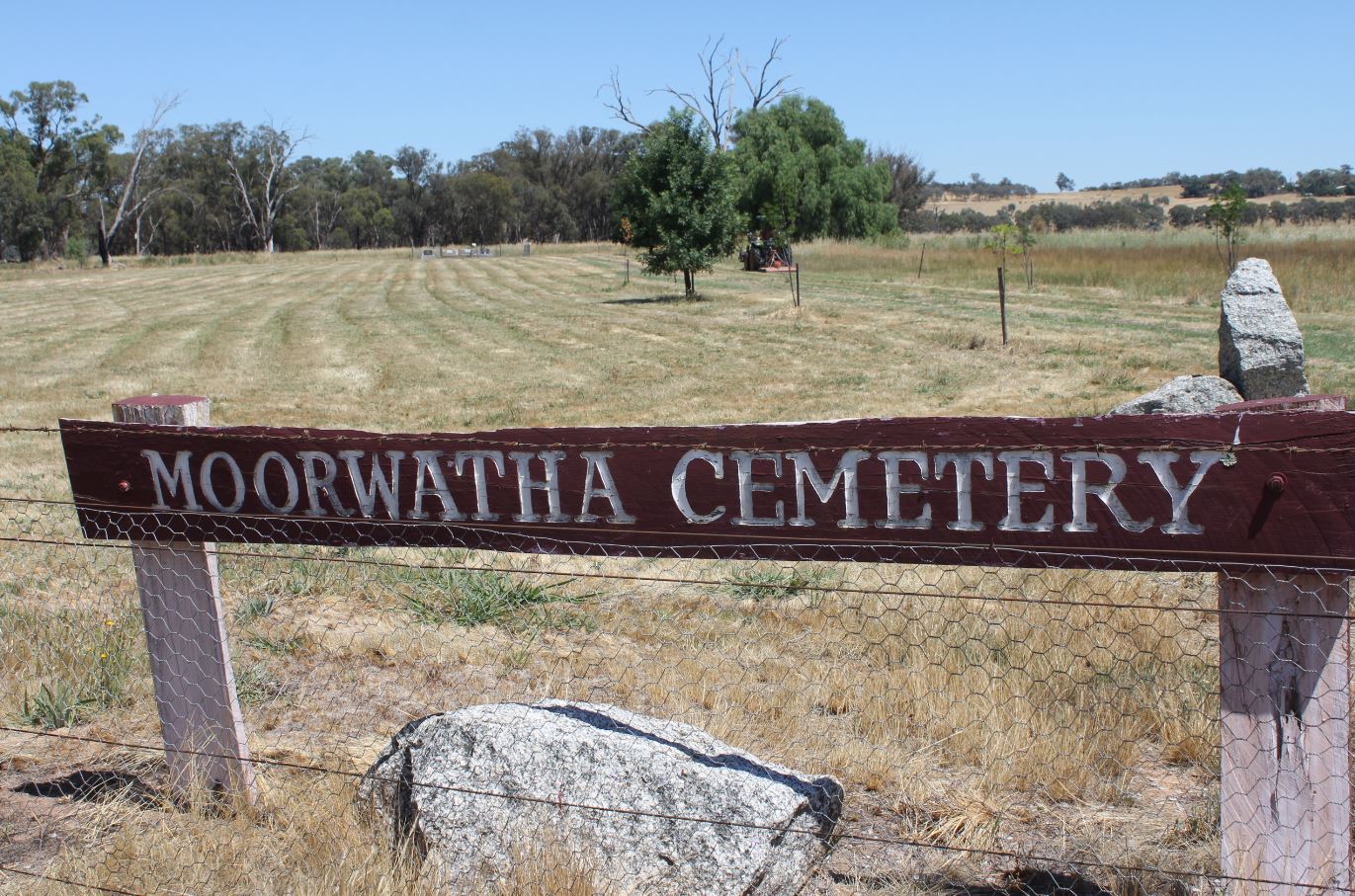
Moorwatha Cemetery (click to enlarge)
In the photograph of the cemetery sign, a tractor can be seen in the background. This man was cutting the grass in the cemetery grounds and had he not chosen to do this today, we would never have spotted the graves or the sign. It was the most astounding piece of luck. I don’t think they get many visitors at Moorwatha, he was probably very surprised to see us.
The cemetery was basically three clusters of graves belonging to three families – the Vile family, the Maxwell family and the Weule family. There were some other graves, but these were the plots with their original headstones, obviously maintained through the years by the families still in residence.

Grave of Joseph Vile in Moorwatha Cemetery. (Click to enlarge)
I have a Vile in my own ancestry, the great great grandmother of Mrs Mary Ann Peard nee Burleton. What’s more, Mary Ann’s family came from Somerset as did this Vile family! I thought for sure I was onto something. Then I found the surname Weule and was even more excited!
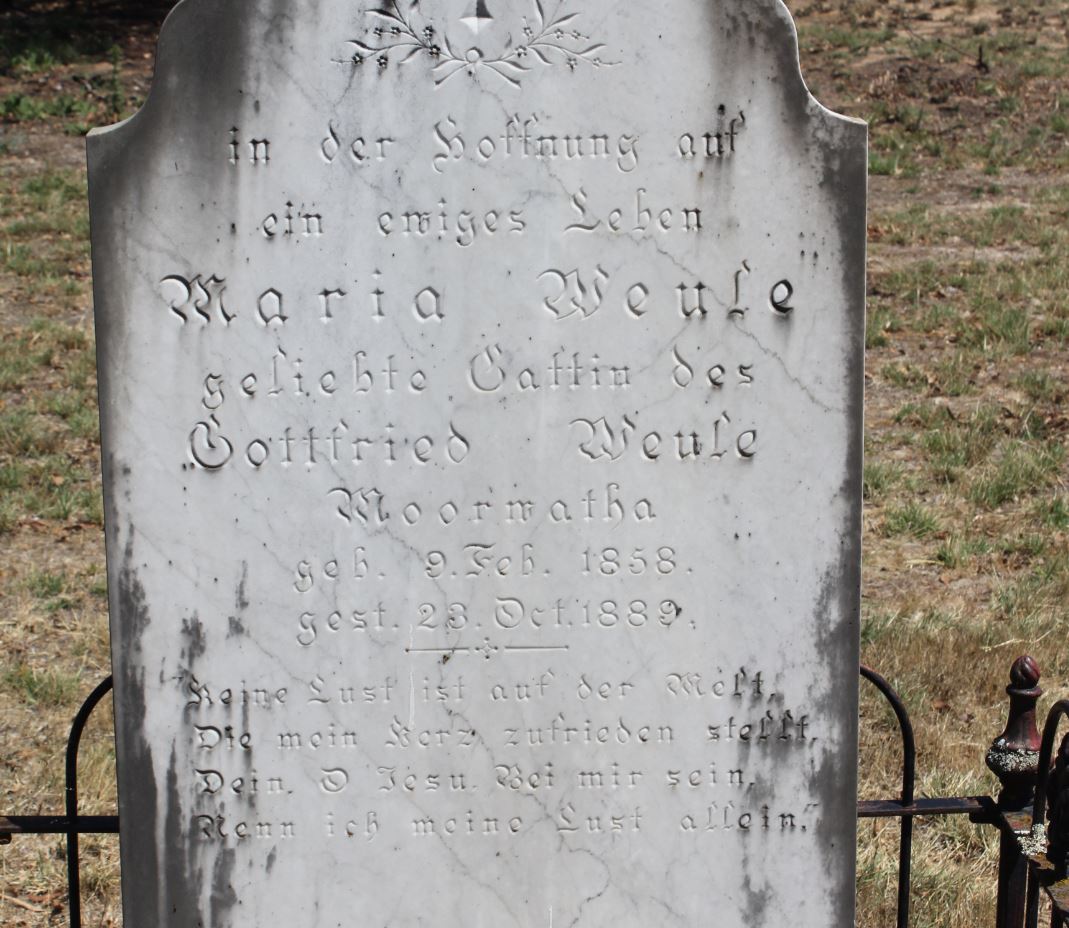
Grave of Maria Weule
Weule (pronounced Wiley) is a surname which married into my Morey family at a few different points, and to see it here seemed more than coincidental. However, coincidental is all that I have. The family of Johann Friedrich Weule in Mannus has no obvious connection to the family here. But just as another coincidence – My Johann Weule was married to Anna Scheetz. The grave right beside Maria Weule’s was this one:
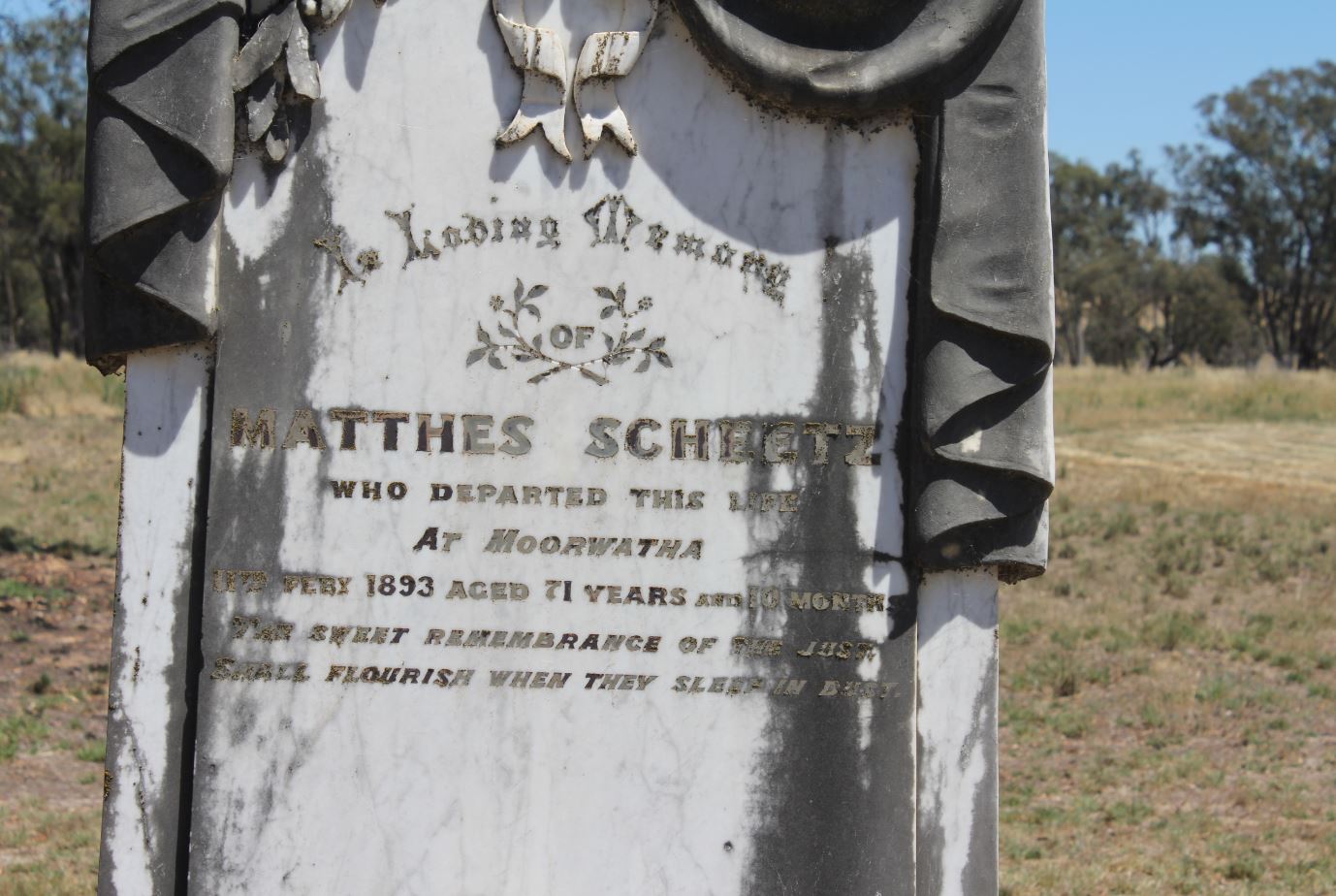
Grave of Mathes Scheetz at Moorwatha (Click to enlarge)
Certainly, research to be done here.
In the meantime, we finished by looking at the Maxwell graves and photographing them, then considered the job done. The man on the tractor was still hard at work cutting the grass. As we headed towards the car his curiosity obviously got the better of him and he turned off the engine and came over for a chat. He asked if we were related to the families here and I said the Weules looked like our family. I’ve lived in very small rural communities all my life and I know very well how the locals need to be able to find a place for a newcomer. I told him about the ones at Tumbarumba and he said yes, there were some of that family in the Snowy Mountains, and another lot towards Benalla. He was a Maxwell himself, but he knew the Weules well. He had been born in Moorwatha and the local farmers maintained the cemetery because their family were there. He pointed to the paddocks around us telling us which had belonged to Weules and which still did. He also directed us to speak to his 90 year old father in Howlong, but unfortunately we did not have time to do this.
He then pointed out a lone grave – right across the field from all the rest. “No one knows why it’s over there all on its own.” He said. “It’s the oldest grave in the cemetery.” It was the area of the field that he’d just been cutting, and I’d never have spotted it.
After several minutes of chatting, my quite patient son was becoming fidgety so we said our goodbyes and headed off, feeling very welcomed by the friendship and assistance we’d received in Howlong and here in Moorwatha. It was a detour well worth making.

Grave of Agnes Moore at Moorwatha. As it turns out not the oldest grave, but the grave of the oldest resident. A grave in its very own acre at some distance from the others. Surely there’s a story here too. (click to enlarge)





